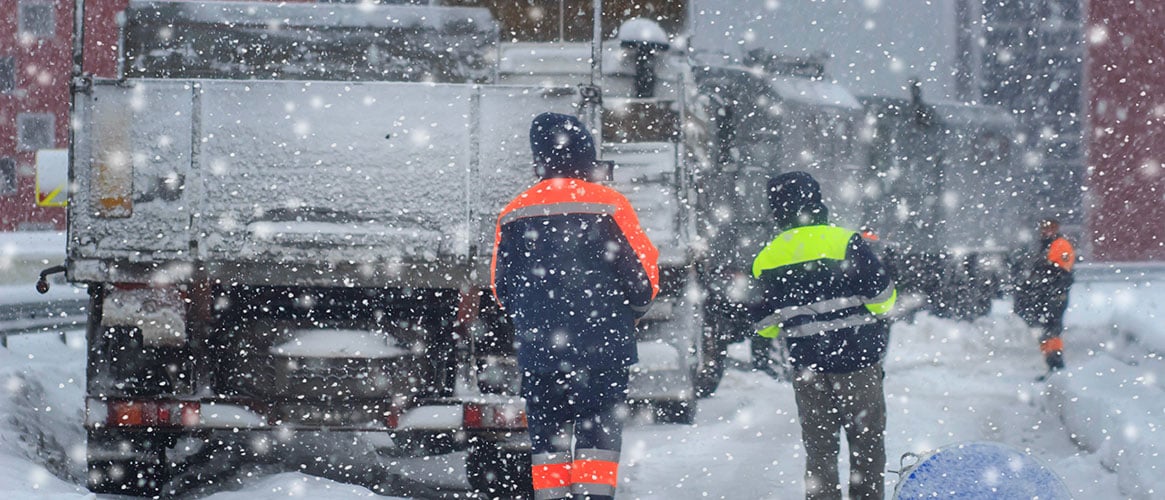Although OSHA does not have a specific standard that covers working in cold environments, under the Occupational Safety and Health Act (OSH Act) of 1970, employers have a duty to protect workers from recognized hazards.
Working under cold conditions can lead to various injuries or health effects, which are collectively known as cold stress. This can lead to death or serious physical harm in the workplace.
Construction workers may experience cold stress when working:
- Outdoors on a cold day.
- In a refrigerated room.
- In an unheated building.
- In cold water, rain, or snow.
- While handling cold objects or materials.
Other workers who may be susceptible to cold stress are field workers, cold storage workers, and workers who work with refrigerated or frozen foods.
What is the impact of cold stress?
The hazardous effects of cold on the body may include dehydration, numbness, shivering, frostbite, immersion foot (trench foot), and hypothermia. Hazards associated with cold stress are categorized into systemic and local effects. Systemic effects impact more than just the local area and can affect the whole body. Local effects impact the part of the body where the exposure to cold is the greatest. Numbness, frostbite, and immersion foot are all local effects. Immersion foot is the result of the skin’s having been exposed too long to cold and dampness. Symptoms include reddening skin, pain, leg cramps, numbness and blisters resulting in swelling, tingling, itching, loss of skin, or skin ulcers. Hypothermia is the most serious effect of cold stress. Once the body loses the ability to maintain its normal temperature, the body temperature lowers, and other symptoms such as violent shivering, slow or slurred speech, confusion, hallucinations, a weak and irregular pulse, or unconsciousness occurs.
Certain people are more susceptible than others to cold stress. People who are not physically fit, have a chronic illness, drink alcohol or take drugs (including prescription drugs), are wet or damp from work or weather, are fatigued, are exposed to vibration from tools, don’t wear the right clothing, or are not used to working in cold have a higher risk.
How can you recognize cold stress?
Shivering is the body’s response to cold stress and serves as a protection mechanism by increasing the rate of metabolism. Be on guard for if workers are shivering because it’s a good sign of cold stress and possible hypothermia. Subjective responses of workers provide a good tool for recognizing cold stress in the workplace. These include workers seeking warm locations, adding layers of clothing, or increasing the work rate.
If there is a noticeable drop in manual dexterity for workers, local cold stress may be occurring. Manual dexterity decreases with cold, which could result in safety hazards to the worker and coworkers.
How can you prevent cold stress?
Employers can help protect workers by providing training, controlling temperature and wind when possible by using heaters and windbreaks, rotating workers in cold jobs so that no one is exposed too long, scheduling work at warmest times, encouraging self-pacing and extra breaks if necessary, establishing a buddy system, and keeping first aid supplies and equipment available.
Equally important, employees can do their part. Proper insulation and good ventilation is critical for clothing worn during cold stress exposures. Better insulation is achieved by layering clothes rather than by wearing just one warm garment. Layering allows a person to add or remove layers to adjust for different insulation needs during the work period.
Note that the insulation quality of clothing may be greatly decreased by moisture. Thus, water vapor permeability is also important. A waterproof shell may not allow sweat to escape. A water repellent shell may keep a worker warmer. Seek warm locations during breaks and replace lost fluids with warm, sweet, non-caffeine-containing drinks to avoid dehydration. By taking the necessary precautions, employers and workers together can minimize the potential for cold stress.
